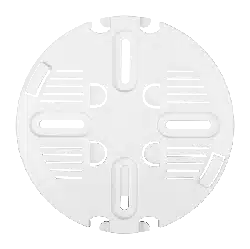Loading ...
Loading ...
Loading ...

Unied Access Point Administrator’s Guide
Unied Access Point Administrator’s Guide
Page 109
October 2017
Section 9 - Clustering Multiple APs
Section 9 - Clustering Multiple APs
The UAP supports AP clusters. A cluster provides a single point of administration and lets you view, deploy, congure,
and secure the wireless network as a single entity rather than a series of separate wireless devices.
This section describes the following features:
•) “Managing Cluster Access Points in the Cluster” on page 109
•) “Managing Cluster Sessions” on page 113
•) “Conguring and Viewing Channel Management Settings” on page 114
•) “Viewing Wireless Neighbourhood Information” on page 116
•) “Cluster Firmware Upgrade” on page 119
Managing Cluster Access Points in the Cluster
The AP cluster is a dynamic, conguration-aware group of APs in the same subnet of a network. Each cluster
can have up to 8 members. Only one cluster per wireless network is supported; however, a network subnet can
have multiple clusters. Clusters can share various conguration information, such as VAP settings and QoS queue
parameters.
A cluster can be formed between two APs if the following conditions are met:
•) The APs are identical models.
•) The APs are connected on the same bridged segment.
•) The APs joining the cluster have the same Cluster Name.
•) Clustering mode is enabled on both APs.
Note: For two APs to be in the same cluster, they do not need to have the same number of radios;
however, the supported capabilities of the radios should be same.
Note: DWL-6700AP doesn’t support clustering.
Clustering APs
Only identical models may be clustered together. For example, the DWL-2600AP can only form a cluster with other
DWL-2600APs.
Viewing and Conguring Cluster Members
The Access Points page allows you to start or stop clustering on an AP, view the cluster members, and congure the
location and cluster name for a cluster member. From the Access Points page, you can also click the IP address of
each cluster member to navigate to conguration settings and data on an access point in the cluster.
To view information about cluster members and to congure the location and cluster of an individual member, click the
Access Points tab.
The following gure shows the Cluster > Access Points page when clustering is not enabled.
Loading ...
Loading ...
Loading ...
